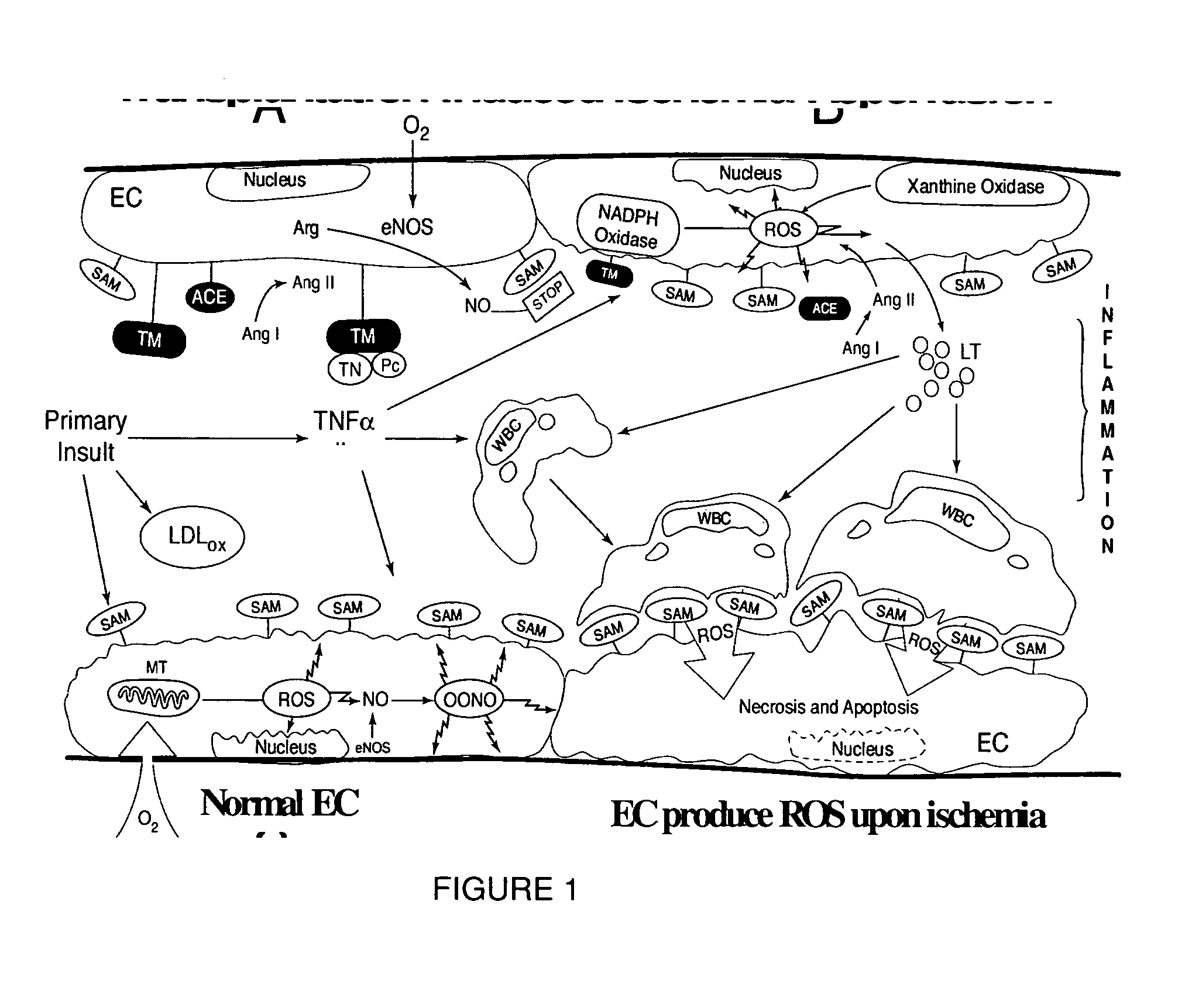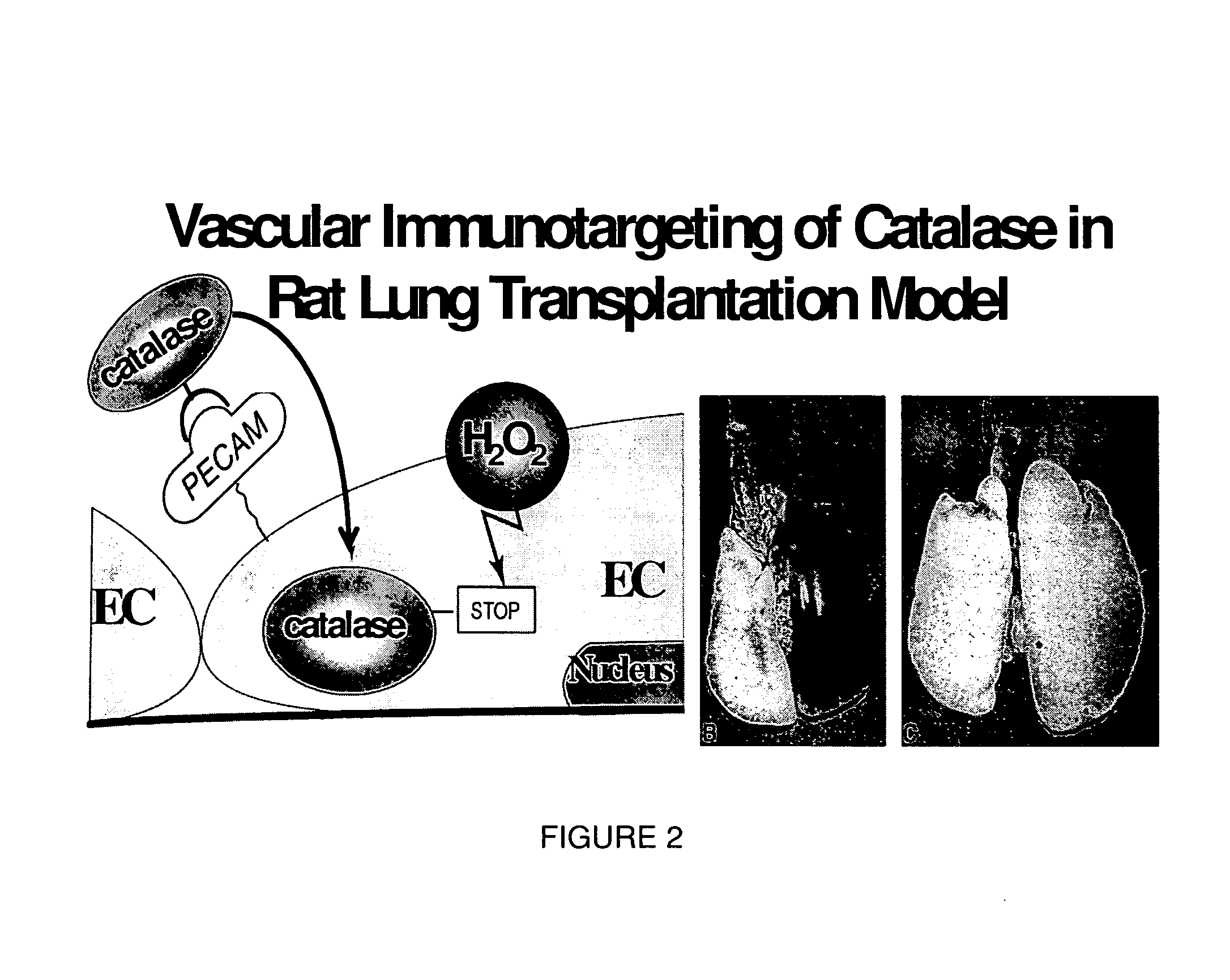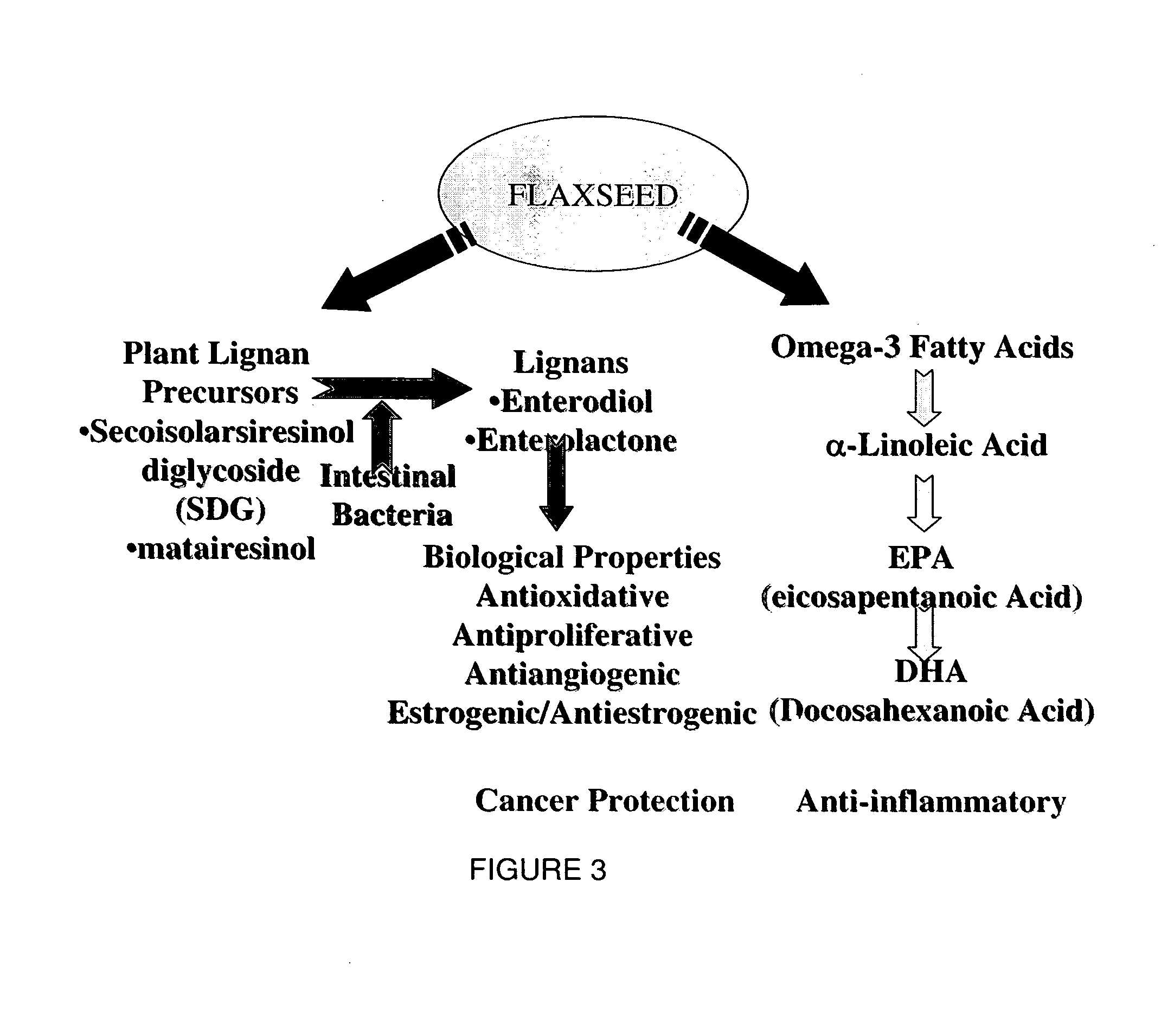Flaxseed lignan complex, methods of using AMD compositions thereof
a technology of flaxseed lignan and amd, which is applied in the direction of heterocyclic compound active ingredients, plant/algae/fungi/lichens ingredients, biocide, etc., can solve the problems of ischemia-reperfusion-induced injury, early morbidity and mortality, and insufficient antioxidant capacity of these antioxidants, so as to increase the expression of endogenous drug metabolizing enzymes
- Summary
- Abstract
- Description
- Claims
- Application Information
AI Technical Summary
Benefits of technology
Problems solved by technology
Method used
Image
Examples
example 1
Delivery of Endothelial Antioxidant Enzymes can Prevent Lung Transplant Injury
[0080]Using a rodent model of lung transplantation, targeted antioxidant enzyme delivery to the pulmonary endothelium, were investigated and antioxidant treatment of the pulmonary endothelium by vascular immunotargeting of catalase were shown to alleviates oxidative stress and reduces acute lung transplantation injury—see FIG. 2. This strategy, has established that alleviation of endothelial oxidative stress is sufficient to confer significant tissue protection in IRI.
[0081]These findings validate the therapeutic potential of boosting vascular antioxidant defense as a novel strategy to reduce tissue injury with lung transplantation. Potential applications of this strategy include improving the outcome of clinical lung transplantation and a wide variety of endothelial disorders. Provided herein is a non-toxic, safe dietary agents that act by boosting the intracellular, endogenous antioxidant defense and pre...
example 2
Flaxseed and its By-Products as Bioactive, Therapeutic Dietary Supplements
[0082]Flax is an annual plant that thrives in deep moist soils rich in sand, silt, and clay. The seeds in the flax plant are filled with flaxseed oil, sometimes called linseed oil. Flaxseeds are known as Linum usitatissimum with the species name meaning “most useful”. The flax plant originated in Mesopotamia and first records of the culinary use of flaxseeds is from times of ancient Greece. Flaxseed was first planted in the US with the arrival of the early colonists in North. In the 17th century, flax was first introduced and planted in Canada, the country that is currently the major producer.
[0083]Flax products are made from the seeds found inside the fruits. The seeds contain a fatty oil called alpha-linolenic acid (ALA), an essential fatty acid and linoleic acid (see FIG. 3). Essential fatty acids (EFA's) are the primary nutritional component of flax seed. The two key EFA's are Linoleic and linolenic. Flax ...
example 3
Lignans Modulate the Production of Antioxidant Enzymes (AOEs)
[0087]In addition to their direct antioxidant activities (described in the examples above), some lignans have also been shown to upregulate endogenous antioxidant defenses such as the Phase I and Phase II enzymes which are first lines of defense against xenobiotics and more specifically act against dietary and environmental carcinogens that enter the body. The Phase I enzymes identify pre-carcinogenic compounds (xenobiotics) and make them more reactive, more water-soluble and easier for the body to dispose of (often via the action of Phase II enzymes). Phase I enzymes consist of CYPp450 family of cytochromes. Proteins belonging to this class of enzyme catalyze reactions resulting in the addition of functional groups and reactive centers e.g. SH, OH,—NH2 and —COOH groups to their substrates. Enzymes involved in the Phase II or the detoxification process e.g. Glutathione —S— transferase, and the N-acetyl transferases are res...
PUM
| Property | Measurement | Unit |
|---|---|---|
| Concentration | aaaaa | aaaaa |
| Chemotherapeutic properties | aaaaa | aaaaa |
Abstract
Description
Claims
Application Information
 Login to View More
Login to View More - R&D
- Intellectual Property
- Life Sciences
- Materials
- Tech Scout
- Unparalleled Data Quality
- Higher Quality Content
- 60% Fewer Hallucinations
Browse by: Latest US Patents, China's latest patents, Technical Efficacy Thesaurus, Application Domain, Technology Topic, Popular Technical Reports.
© 2025 PatSnap. All rights reserved.Legal|Privacy policy|Modern Slavery Act Transparency Statement|Sitemap|About US| Contact US: help@patsnap.com



